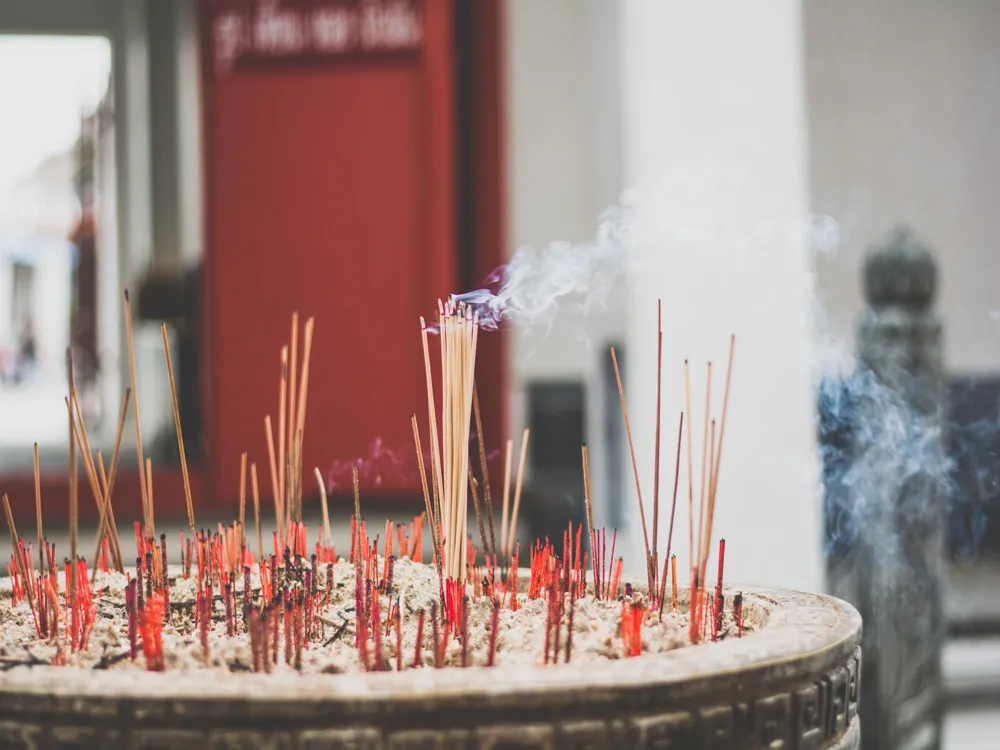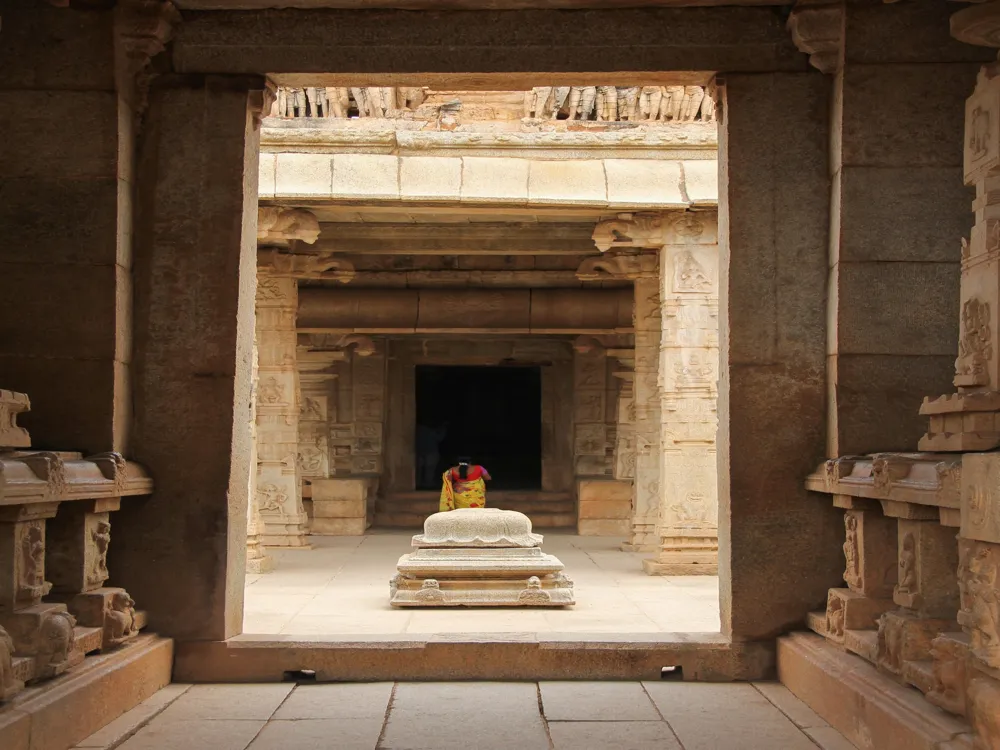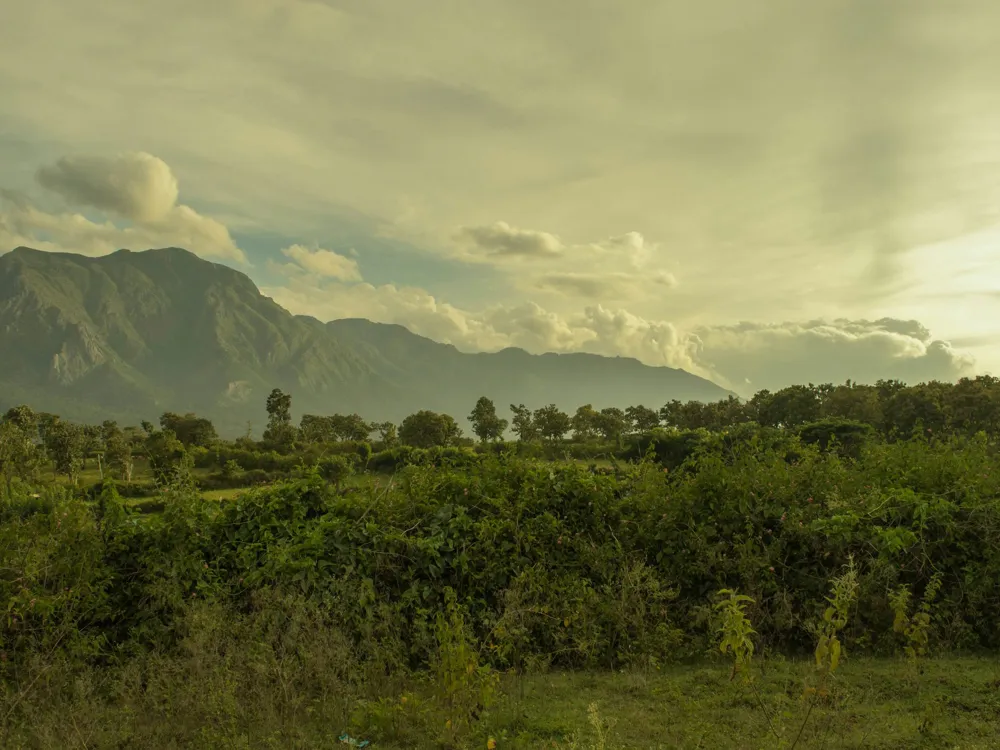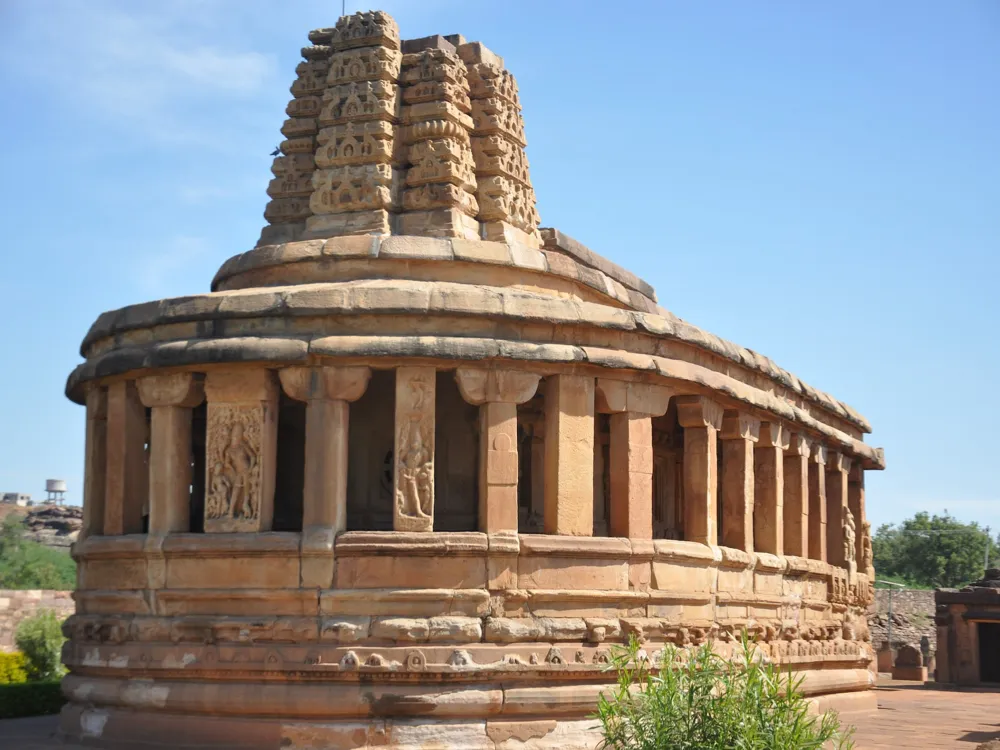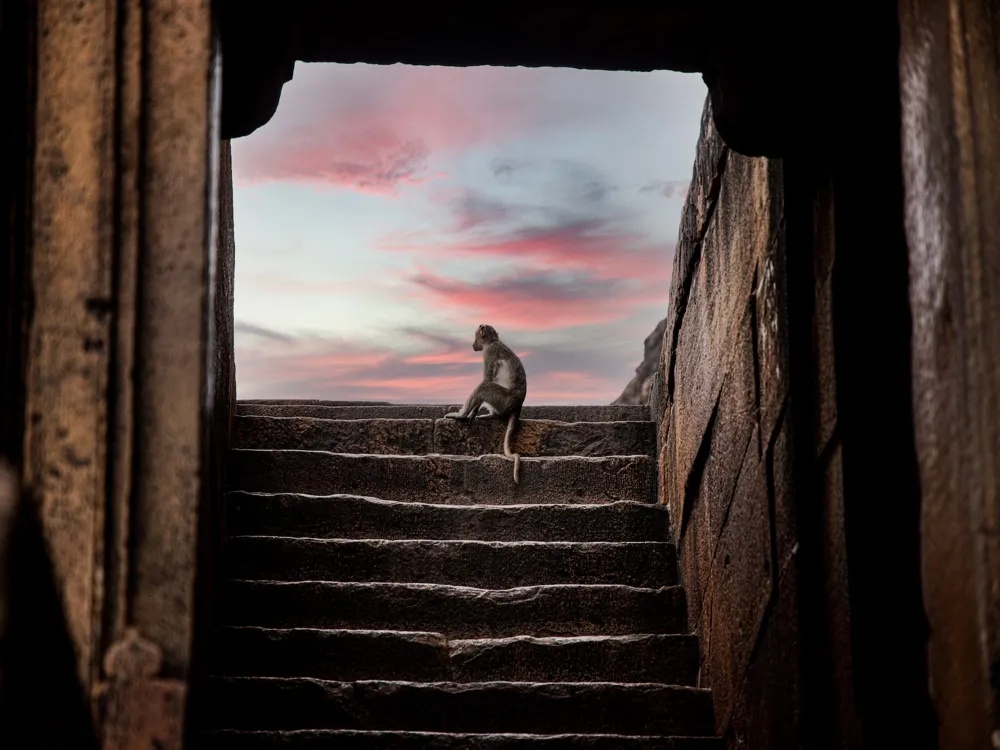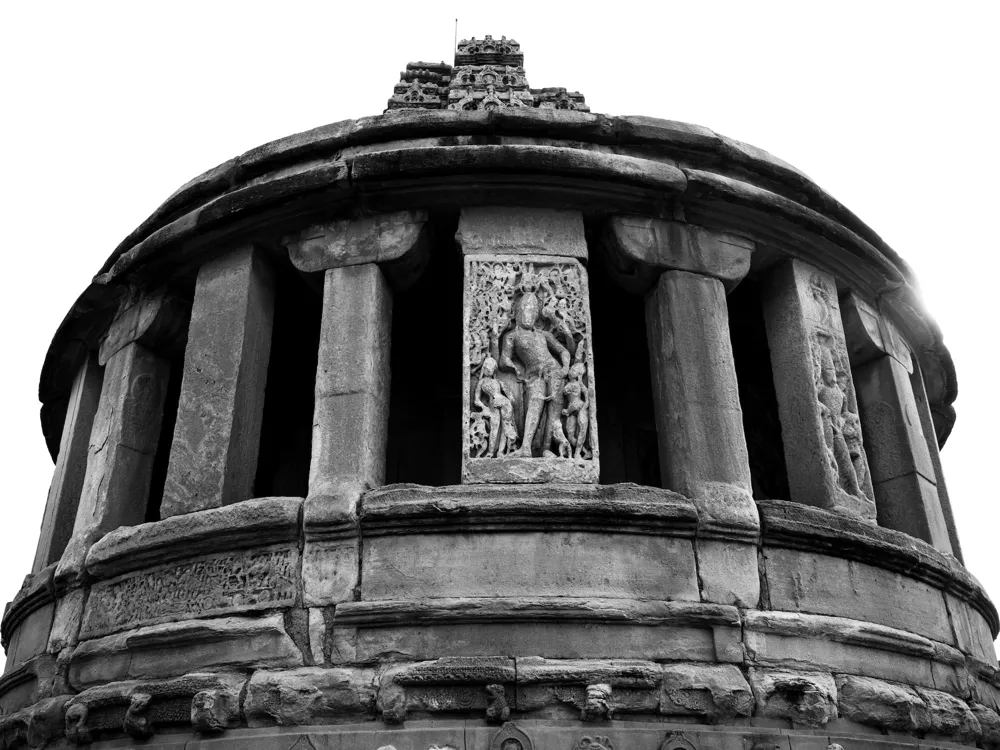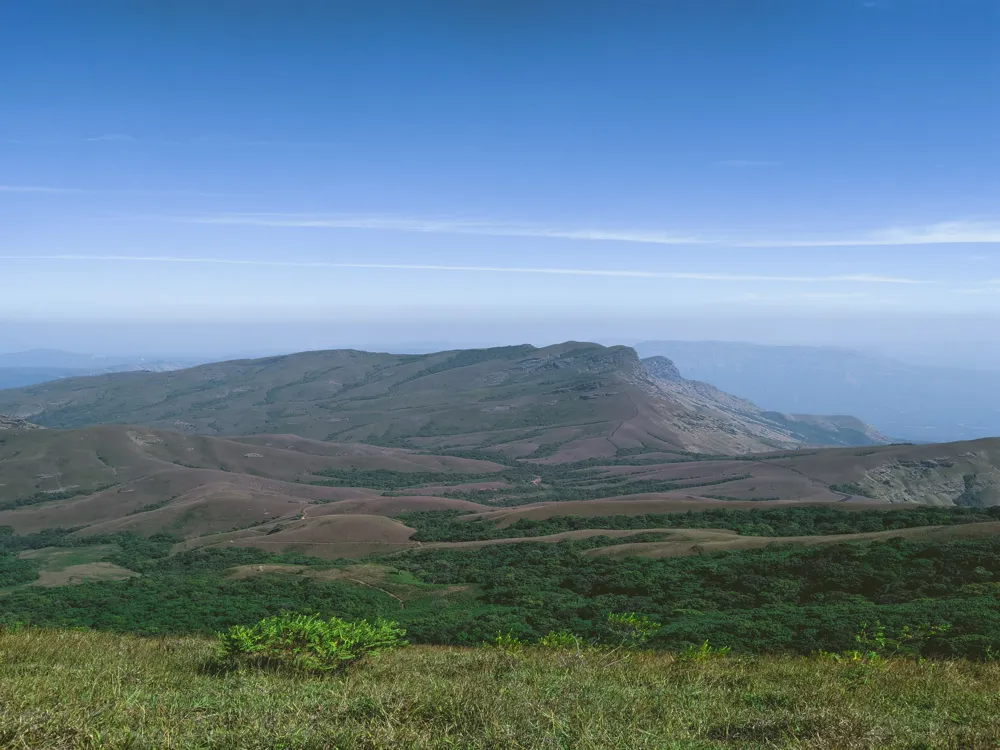Hampi, a UNESCO World Heritage Site, is an ancient village in the southern Indian state of Karnataka. It's renowned for its significant historical heritage, deeply rooted in its impressive ruins of the Vijayanagara Empire dating back to the 14th century. This site, spread over 4,100 hectares, showcases an astonishing ensemble of temples, palaces, market streets, aquatic structures, bastions, and royal pavilions.
The history of Hampi is both rich and captivating. It was the capital of the Vijayanagara Empire and stood as a testament to the empire's immense wealth and architectural prowess. The ruins at Hampi are a window into a past where religion, culture, and art flourished. Pilgrims and travelers from around the globe were drawn to Hampi, a center for trade and a hub for the arts and religion.
Today, Hampi is more than just a historical site. It's a journey back in time, offering a unique blend of heritage, nature, and spirituality. The landscape is dotted with giant boulders, ancient edifices, and the Tungabhadra River's serene flow, creating a mystical aura around the ruins.
The architectural legacy of Hampi is unparalleled. The Vijayanagara style, seen here, combines the Dravidian and Nagara styles of architecture, resulting in unique and grandiose structures. The use of local hard granite in the construction is a defining feature, carved intricately to depict scenes from Hindu mythology, epics, and the royal court's life.
Prominent structures include the iconic Virupaksha Temple, known for its towering gopuram and intricate carvings. The Vitthala Temple, another architectural marvel, is famous for its musical pillars and the Stone Chariot, which epitomizes Vijayanagara architecture's excellence. The Lotus Mahal, Elephant Stables, and Hazara Rama Temple are other exquisite examples, each telling a story of ingenuity and artistry.
These structures were not just places of worship; they were integral to the social, cultural, and political life of the Vijayanagara Empire. The Hampi Bazaar, a long street facing the Virupaksha Temple, was a thriving marketplace, showcasing Hampi's economic vitality.
The ruins of Hampi are also home to many secular structures, including the Queen’s Bath, royal enclosures, and public utility buildings, which reflect the advanced urban planning and hydraulic engineering of the era. The sophisticated aqueducts and canals for irrigation demonstrate a highly developed understanding of water management.
The ideal time to visit Hampi is from October to February, when the weather is pleasant. Summers can be extremely hot, and the monsoon season, while scenic, can make exploring the ruins challenging. Hampi offers a range of accommodations, from budget guesthouses to luxury resorts. Staying close to the heritage site offers easy access to the ruins. Renting bicycles or mopeds is a popular way to explore Hampi. Auto-rickshaws and private taxis are also available for longer distances within the site. As a site of religious and historical significance, visitors are advised to dress modestly and respect local customs and traditions. Opting for a guided tour can enhance the experience, as local guides provide insights into Hampi’s history, architecture, and mythology.
Hampi is accessible by various means of transportation. The nearest airport is in Bellary, about 60 km away. Hospet, 13 km from Hampi, is the nearest railway station and is well-connected to major cities. By road, Hampi is connected through state and national highways, with regular bus services from major cities in Karnataka.
Overview of Hampi, Karnataka
Architecture of Hampi
Tips When Visiting Hampi
Best Time to Visit
Accommodation
Local Transportation
Respect Local Customs
Guided Tours
How To Reach Hampi
Sasivekalu Ganesh
Hampi
Karnataka
NaN onwards
View hampi Packages
Hampi Travel Packages
View All Packages For Hampi
Top Hotel Collections for Hampi

Private Pool

Luxury Hotels

5-Star Hotels

Pet Friendly
Top Hotels Near Hampi
Other Top Ranking Places In Hampi
View All Places To Visit In hampi
View hampi Packages
Hampi Travel Packages
View All Packages For Hampi
Top Hotel Collections for Hampi

Private Pool

Luxury Hotels

5-Star Hotels

Pet Friendly







